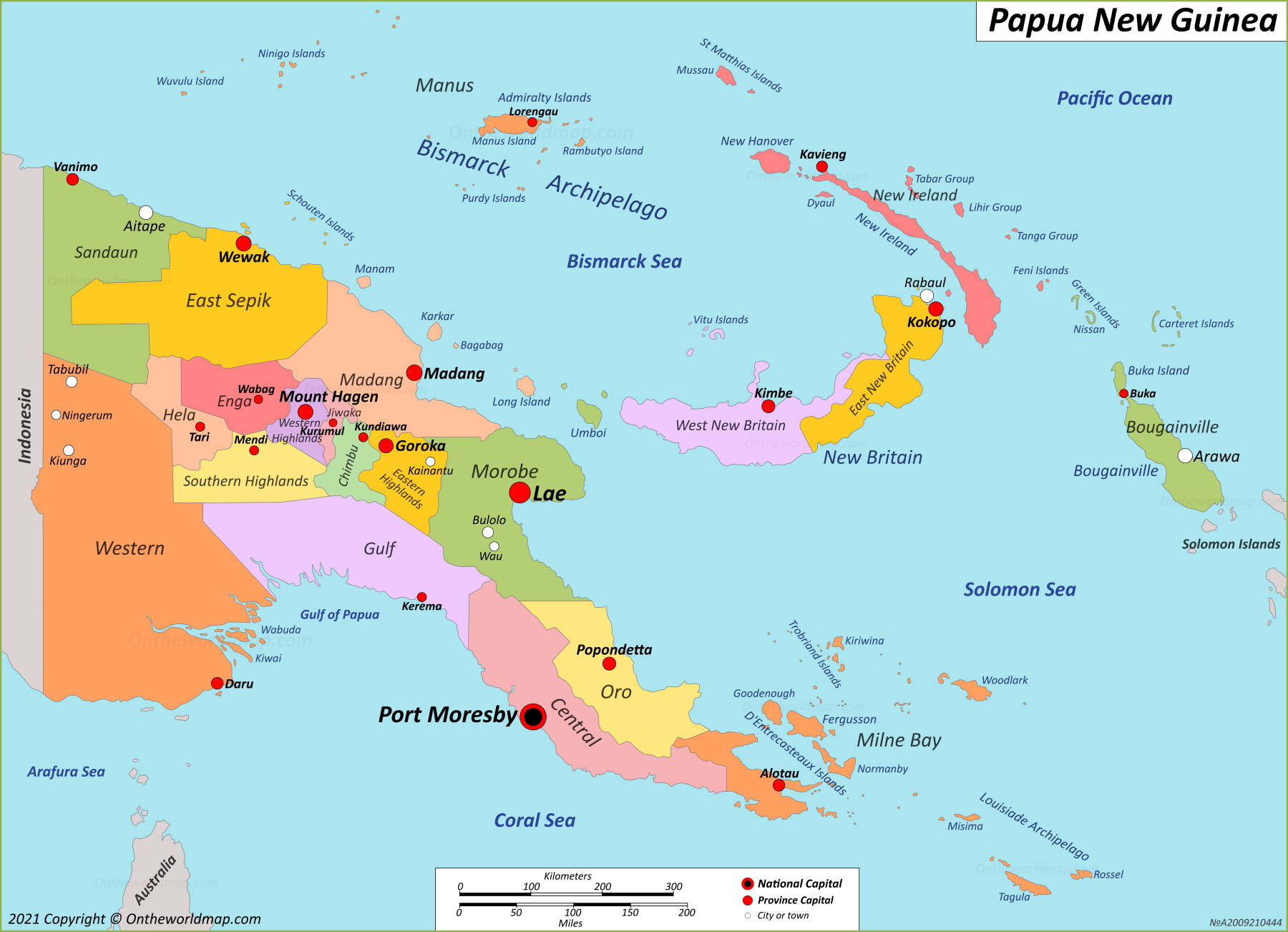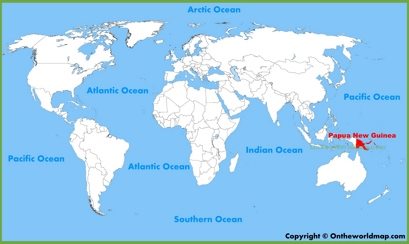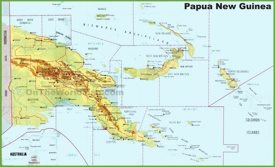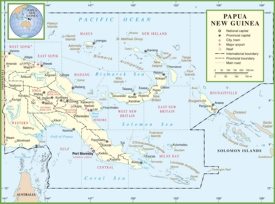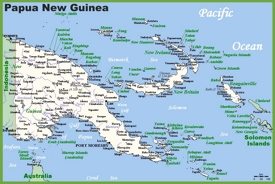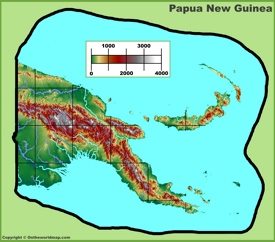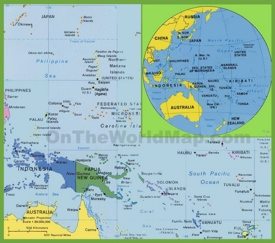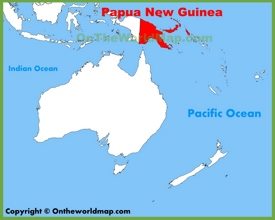Papua New Guinea Map
Description:
This map shows governmental boundaries of countries; islands, provinces, province capital cities, and major cities and towns in Papua New Guinea.
You may download, print or use the above map for educational, personal and non-commercial purposes. Attribution is required. For any website, blog, scientific research or e-book, you must place a hyperlink (to this page) with an attribution next to the image used.
Online Map of Papua New Guinea
About Papua New Guinea
Papua New Guinea occupies the eastern half of the island of New Guinea and numerous offshore islands in the southwestern Pacific Ocean. The country lies approximately 100 miles north of Australia, sharing its only land border with Indonesia to the west. The Solomon Islands archipelago lies to the east, separated from Papua New Guinea by the Solomon Sea. The nation encompasses an area of 178,700 square miles (462,840 square kilometers).
The capital and largest city, Port Moresby, has a population of approximately 364,000 people. Other major urban centers include Lae, Mount Hagen, and Madang. The country's total population reaches approximately 11.8 million people, making it the most populous Pacific Island nation. Papua New Guinea maintains extraordinary linguistic diversity, with over 850 indigenous languages spoken across its territories.
The nation's terrain varies dramatically from coastal lowlands to massive mountainous regions. The highest point, Mount Wilhelm, reaches 14,793 feet (4,509 meters). Extensive rainforests cover much of the country, hosting diverse ecosystems and numerous endemic species. The climate remains predominantly tropical, with high temperatures and significant rainfall throughout the year.
Papua New Guinea's economy relies heavily on its natural resources, particularly mining, oil, and gas exports. The country possesses significant deposits of gold, copper, and natural gas. Agriculture employs the majority of the working population, with coffee, palm oil, and cocoa serving as major export crops. Despite its resource wealth, infrastructure development remains limited in many regions.
Tourism in Papua New Guinea centers around its natural attractions and diving opportunities. The Kokoda Track, a historic World War II site, draws trekking enthusiasts. The country offers world-class diving locations in Milne Bay, Tufi, and Kimbe Bay, featuring pristine coral reefs and WWII wreck sites. The highlands region attracts visitors interested in witnessing traditional village life and exploring unique biodiversity.
Major tourist destinations include the Sepik River, known for its traditional art and river cruises, and the Trobriand Islands, famous for their unique marine environment. The country also boasts numerous national parks, including Varirata National Park near Port Moresby and the Mount Wilhelm National Park in the highlands. Despite its tourism potential, the sector remains relatively underdeveloped due to limited infrastructure and accessibility challenges.
The Facts:| Flag: |

|
| Capital: | Port Moresby |
| Island: | New Guinea |
| Area: | 178,700 sq mi (462,840 sq km) |
| Population: | ~ 11,781,559 (2021 estimate) |
| Official language: | English, Hiri Motu, PNG Sign Language, Tok Pisin |
| Religion: |
|
| Currency: | Kina (PGK) |
| Driving side: | Left |
| Calling code: | +675 |
| Internet TLD: | .pg |
| Time zone: | UTC+10, +11 (PNGST) |
| Gross domestic product (PPP) (2023 estimate): |
|
| Gross domestic product (nominal) (2023 estimate): |
|
Google Map of Papua New Guinea
Largest cities: Port Moresby, Lae, Arawa, Mount Hagen, Madang, Wewak, Goroka, Kokopo, Popondetta, Aitape, Rabaul, Hanuabada Village, Kimbe, Tabubil, Daru, Kavieng, Alotau, Vanimo, Bulolo, Kiunga, Tari, Kundiawa, Mendi, Kainantu, Lorengau, Ialibu, Kerema, Ningerum, Wau, Wabag.
Regions of Papua New Guinea: Highlands, New Guinea Islands, Momase, Southern.
Provinces of Papua New Guinea: Central, Chimbu, Eastern Highlands, East New Britain, East Sepik, Enga, Gulf, Madang, Manus, Milne Bay, Morobe, New Ireland, Oro, Bougainville, Southern Highlands, Western, Western Highlands, West New Britain, Sandaun, National Capital District, Hela, Jiwaka.

